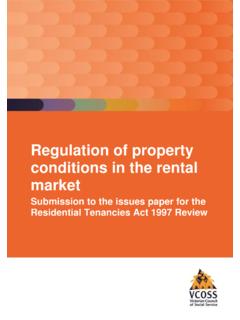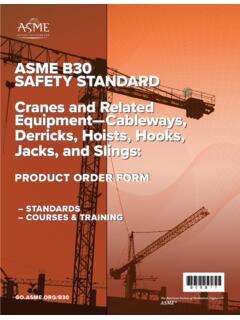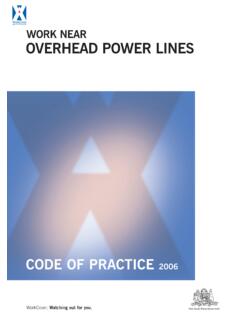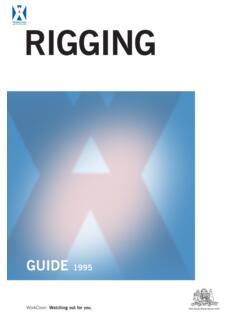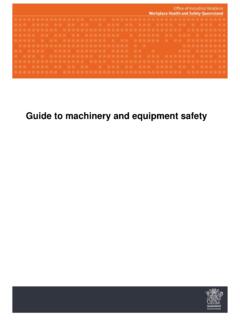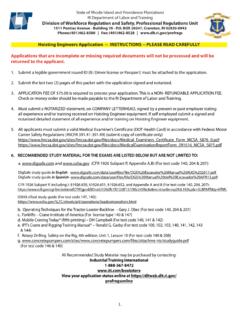Transcription of Guide to Road Design Part 3: Geometric Design
1 Guide to road Design part 3: Geometric Design Sydney 2016 Guide to road Design part 3: Geometric Design Third edition prepared by: Richard Fanning, Gary Veith, Mike Whitehead and Peter Aumann Publisher Austroads Ltd. Level 9, 287 Elizabeth Street Sydney NSW 2000 Australia Phone: +61 2 8265 3300 Third edition project managers: Richard Fanning, John Spathonis Abstract This Guide provides road designers and other practitioners with information about the Geometric Design of road alignments. Design parameters include: road classification; Design speeds; Design vehicles; alignment controls; cross-section components, including travel lanes, shoulders and verges; and provisions for public transport and cyclists. Speed parameters include: operating speed, desired speed and Design speed; and their relationship with each other. Horizontal and vertical alignments include development and application of: circular curves; superelevation; grades; vertical curves; procedures for the grading of a road alignment; and determination of sight distances across vertical curves.
2 About Austroads Austroads is the peak organisation of Australasian road transport and traffic agencies. Austroads purpose is to support our member organisations to deliver an improved Australasian road transport network. To succeed in this task, we undertake leading-edge road and transport research which underpins our input to policy development and published guidance on the Design , construction and management of the road network and its associated infrastructure. Austroads provides a collective approach that delivers value for money, encourages shared knowledge and drives consistency for road users. Austroads is governed by a Board consisting of senior executive representatives from each of its eleven member organisations: x Roads and Maritime Services New South Wales x Roads Corporation Victoria x Department of Transport and Main Roads Queensland x Main Roads Western Australia x Department of Planning, Transport and Infrastructure South Australia x Department of State Growth Tasmania x Department of Transport Northern Territory x Transport Canberra and City Services Directorate, Australian Capital Territory x Australian Government Department of Infrastructure and Regional x Australian Local Government Association x New Zealand Transport Agency.
3 Keywords Geometric road Design , operating speed, cross-section, traffic lanes, shoulders, verge, batters, roadside drainage, medians, bicycle lanes, HOV lanes, on-street parking, service roads, outer separators, footpaths, bus stops, sight distance, stopping sight distance, sight distance on horizontal curves, overtaking sight distance, manoeuvre sight distance, intermediate sight distance, headlight sight distance, horizontal curve perception sight distance, horizontal alignment, vertical alignment, side friction factor, superelevation, adverse crossfall, grades, auxiliary lanes and bridge considerations, emergency landing strips. Date published September 2016 ISBN 978-1-925451-24-5 Austroads Project No. TP1845 Austroads Publication No. AGRD03-16 Pages 359 Austroads Ltd 2016 This work is copyright. Apart from any use as permitted under the Copyright Act 1968, no part may be reproduced by any process without the prior written permission of Austroads.
4 Acknowledgements First edition prepared by David Barton and project managed by David Hubner. Second edition prepared by David Barton and Gary Veith and project managed by David Hubner. Thank you to the members of the Austroads road Design Task Force who each made substantial contributions to this third edition of the Guide . This Guide is produced by Austroads as a general Guide . Its application is discretionary. road authorities may vary their practice according to local circumstances and policies. Austroads believes this publication to be correct at the time of printing and does not accept responsibility for any consequences arising from the use of information herein. Readers should rely on their own skill and judgement to apply information to particular issues. This third edition contains minor editorial and technical changes throughout. Key new information and updates are: x Section : Additional information and expansion on the Design objectives.
5 X Section : Additional information on vulnerable road users, particularly motorcyclists (Section ) and new information on emergency aircraft runway strips (Section ). x Section : Guidance for determining desired speed for rural roads and on steep grades (Section ). x Section : Additional guidance on crown line (Section ) and rural road lane and shoulder widths (Section ). x Section : Additional guidance on shoulder widths and sealing (Section ). x Section : Additional guidance on verge slopes (Section ) and rounding (Section ). x Section : Additional information on providing bicycle lanes (Section ). x Section : New guidance on a procedure for designing superelevation (Section ) and development of superelevation on shoulders (Section ). x Section : New information outlining a procedure for checking critical vertical clearance points (Section ). x Section : Additional guidance on selecting a starting and terminating point of an auxiliary lane Section x New Appendices: - Appendix B: Emergency aircraft runway strips - Appendix E: Narrow median treatments with wire rope safety barrier - Appendix F: Guidance for wide centreline treatments - Appendix G: Flowcharts and table for determining stopping sight distance requirements for curves with barriers.
6 Guide to road Design part 3: Geometric Design Austroads 2016 | page 44 Traffic Lane Widths Current Australian and New Zealand practice is to provide standard traffic lane widths of m. Traffic lanes are measured to the face of the kerb or to the lane line for multi-lane roads, or roads with shoulders. road agencies may also choose to provide an additional clearance to the face of the kerb to account for shy line effects, or for kerb profiles that have a wider channel ( 450 mm) in areas of high rainfall. Refer to Figure for the definition of the components of kerb and channel. Figure : Kerb and channel components The provision of standard lane widths of m allows for large vehicles to pass or overtake, without either vehicle having to move sideways towards the outer edge of the lane. Research has shown that there is no evidence (Elvik et al. 2009) that supports the assumption that road safety is increased with wider traffic lanes.
7 It was also reported that most freight-efficient vehicles could travel comfortably along roads that have a useable lane width of m, although vehicles such as the rigid-plus-three and the A-triple require m wide lanes (Prem et al. 1999) due to the tracking capability from the multi-combination trailers. Where the operation of Type 2 (triple) road trains (or even larger vehicles) is anticipated, designers should consider the use of wider traffic lanes. [see Commentary 4 and Commentary 5] Some road agencies also provide for the movement of larger vehicles, mobile cranes or low loaders transporting large earthmoving machinery up to m wide without requiring a permit or pilot vehicle on specific sections of their road network. On these routes, designers should be cognisant of the movement of these larger vehicles when considering traffic lane widths less than m wide. Traffic lane widths may also need to be widened on curves to accommodate the extra tracking width required by trucks (refer to Section ).
8 Horizontal curve radii larger than 300 m should be used to avoid lane widening (Table ). The use of lanes wider than m as a result of lane widening is not favoured because of the possibility of two cars travelling side-by-side within the lane. If greater width is required for truck tracking, an edge line should be placed at m and full pavement depth widening should be provided for the remainder of the width. Narrower lanes (down to m Austroads 2009b) may be considered where any of the following apply: x The road reserve or existing development form stringent controls preventing wider lanes. x The road is in a low speed environment. x There is little or no truck traffic. x The alignment and safety records are satisfactory in the case of a reconstructed arterial. Guide to road Design part 3: Geometric Design Austroads 2016 | page 45 Urban road Widths Adoption of standard traffic lane widths of m is desirable in urban areas, for the reasons given above.
9 However, where site constraints preclude the use of the desirable standard width, consideration may be given to reducing the traffic lane width to m, subject to the approval of the relevant road agency. While it is desirable to maintain consistent lane widths along a road , there may be a need to reduce lane widths at intersections to accommodate additional turn lanes. Lane widths at intersections are detailed in the Guide to road Design part 4: Intersections and Crossings: General (Austroads 2009b). Table provides guidance for traffic lane widths on urban arterial roads and Table provides traffic lane widths and shoulder widths for urban freeways. Lane widths to be adopted in residential, commercial and industrial areas are typically determined by the local municipality. Given the varying nature of these developments in terms of scale and traffic mix, designers should seek guidance regarding the choice of traffic lane width from the relevant municipal road agency.
10 Table : Urban arterial road widths Element Lane width (m) Comments General traffic lane General traffic lane widths to be used for all roads For use on low speed roads with low truck volumes Service road lane Range of lane widths on service roads (refer to Section ) Wide kerbside lane Locations where there are high truck volumes (additional width provided for trucks) Locations where motorists and cyclists use the same lane (refer Section and Commentary 6) HOV lane Bus lane (refer Section ) Tram/light rail vehicle lane (refer Section ) Minimum width between kerb and channel (to provide for passing of broken down vehicles) (1) (2) Width of a single lane suitable for use in a left turn slip lane, or two lane, two way divided road with a raised median 2 ( ) Width of two lanes that provide for two lines of traffic to (slowly) pass a broken down vehicle. 1 Generally, a minimum width of m should be provided.








